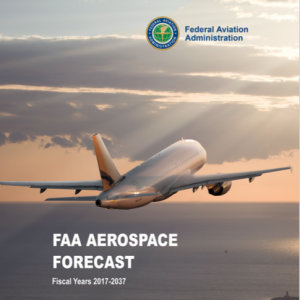The FAA’s Aerospace Forecast for 2017 has simply been launched – and the numbers for the drone trade look a little completely different this 12 months. While a fast abstract of this 12 months’s predictions present large development – the company predicts a 10-fold improve within the business drone fleet by 2021 – the FAA has modified predictions from final 12 months to mirror the truth of the business drone house.
Clearer numbers are excellent news for the US trade, which has been subjected to wildly various predictions from a seemingly infinite checklist of analysis teams, many presenting a completely unrealistic development mannequin primarily based on little or no actual information.
The FAA’s numbers final 12 months confirmed predictions of business drone gross sales rising to 2.7 million models by 2020. By comparability, this 12 months’s baseline forecast is for a fleet of .327 million models by 2020. The greater than 2 million unit drop, explains FAA Deputy Division Manager Michael Lukacs, is partly as a result of a change in mannequin. While final 12 months’s numbers represented unit gross sales, this 12 months’s numbers predict a information level extra essential to regulators: the variety of drones truly in operation. It’s a refined distinction, however a vital one. Drone tech is altering so quickly that operators regularly improve gear, so gross sales will not be essentially equal to fleet numbers.
More importantly, says Lukacs, the FAA and the drone trade have a a lot clearer view of the regulatory construction round business drone flight than they did final 12 months. With the info offered by Part 107 testing and registration, and a clear roadmap for drone integration transferring ahead, researchers can set up extra sensible figures in regards to the tempo of trade development.
FAA researchers are nonetheless optimistic in regards to the business market. “The commercial drone sector is very dynamic and appears to be at an early stage of growth,” says the report. “…FAA anticipates that growth in this sector will continue to accelerate over the next few years. Given the clarity that part 107 has provided to the industry, increasing commercial applications will become likely, which will facilitate additional growth.”
While the baseline numbers for the business drone market are conservative at .422 million in 2021, the brand new mannequin of predictions affords a finest case situation – the “high” prediction – with an estimate of 1.616 million models by 2021. The broad variance between high and low, explains Lukacs, takes the altering trade into consideration – one thing the FAA doesn’t low cost. New innovation and new purposes are creating shortly, which may have an accelerator impact. “The ingenuity of the US drone industry is the wildcard,” says Lukacs.
 Unmanned Aerial Vehicle The latest drone news
Unmanned Aerial Vehicle The latest drone news




